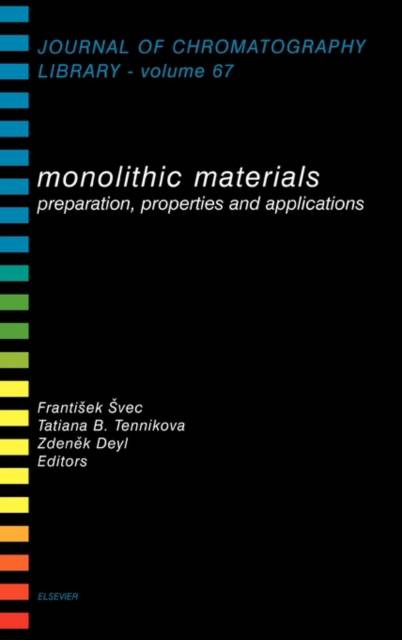
- Afhalen na 1 uur in een winkel met voorraad
- Gratis thuislevering in België vanaf € 30
- Ruim aanbod met 7 miljoen producten
- Afhalen na 1 uur in een winkel met voorraad
- Gratis thuislevering in België vanaf € 30
- Ruim aanbod met 7 miljoen producten
Zoeken
Monolithic Materials
Preparation, Properties and Applications Volume 67
€ 673,45
+ 1346 punten
Omschrijving
During the past decade, monolithic materials in the shape of discs, stacked layers, rolled sheets, sponges, irregular chunks, tubes, and cylinders have all been successfully demonstrated. These formats were prepared from a wide variety of materials including natural polymers such as cellulose, synthetic polymers that involved porous styrene-, methacrylate-, and acrylamide-based polymers, and inorganic materials, mainly silica. Each approach is interesting from the point of view of both preparation and application.Although the current papers and patents concerned with monolithic separation media are quite numerous, the information is scattered throughout a vast number of journals. This book therefore fills the gap in the market for a comprehensive reference book on this subject.Monolithic materials concerns all of the current formats of monolithic materials and provides an integrated view of this novel format of separation media. Since the flow pattern in monolithic devices is different from that in packed beds, the hydrodynamics of the system and mass transport differ considerably from those derived for packed columns. Therefore, this book presents contributions concerned with both flow and mass transfer in the monolithic materials. A significant proportion of the book is devoted to the applications of monolithic materials. It also provides the reader with valuable information about the sources of the specific materials, their properties, and potential applications.
Specificaties
Betrokkenen
- Uitgeverij:
Inhoud
- Aantal bladzijden:
- 800
- Taal:
- Engels
- Reeks:
- Reeksnummer:
- nr. 67
Eigenschappen
- Productcode (EAN):
- 9780444508799
- Verschijningsdatum:
- 29/04/2003
- Uitvoering:
- Hardcover
- Formaat:
- Genaaid
- Afmetingen:
- 156 mm x 234 mm
- Gewicht:
- 1288 g

Alleen bij Standaard Boekhandel
+ 1346 punten op je klantenkaart van Standaard Boekhandel
Beoordelingen
We publiceren alleen reviews die voldoen aan de voorwaarden voor reviews. Bekijk onze voorwaarden voor reviews.







